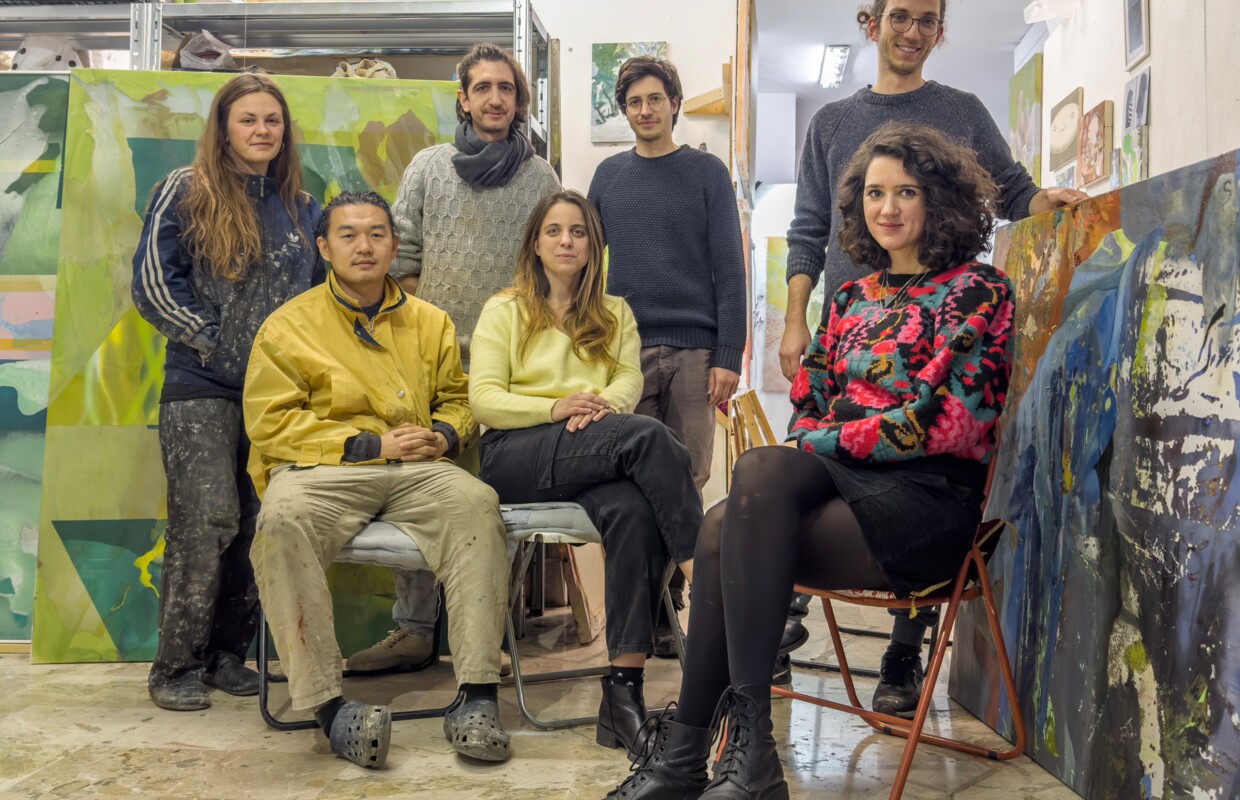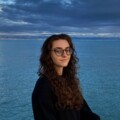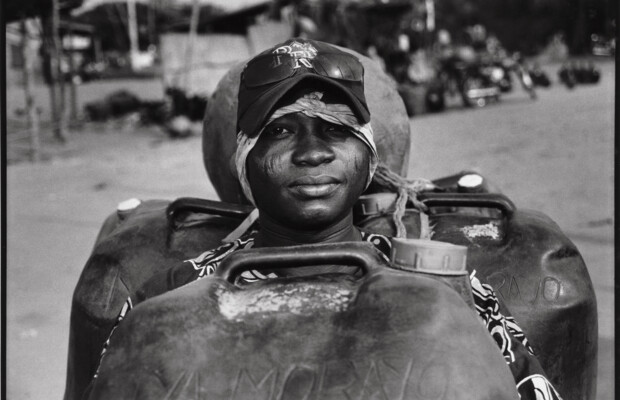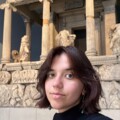Interview at Kadabra Studio
Artist Collectives Series
The topic of artistic collectives has always fascinated and intrigued many people. It's not simply about a group of individuals deciding to cooperate, but about people who teach us the art of working together, building human and professional connections with those who share a common passion, in a single space.
I had the pleasure of delving deep into this topic thanks to a beautiful conversation with the team of Kadabra studio, an artistic collective born in 2020 in Mestre, a city near Venice, currently consisting of ten members (Beatrice Gelmetti, Chiara Calore, Damiano Colombi, Fabiano Vicentini, Federica Zanlucchi, Federico Bordin, Flavia Dal Grande, Francesco Casati, Jingge Dong e Silvia Giordani).

Upon entering the studio, the first thing that strikes you is the intense smell of paint permeating the room. But what immediately catches the eye is the large quantity of canvases, brushes, and colors that characterize the studio. The environment is indeed a reflection of the work behind the objects of art, its spontaneity is one of the things that make it unique and personal.
I was greeted by Damiano, Beatrice, Fabiano, and Federica, who immediately gave me a little tour of the studio and kindly offered me a coffee! They are all young people, more or less the same age, and almost all of them express their creativity through painting, except for Federico Bordin, an engraver.
Talking to them, I sensed a surge of strong positive energy and a beautiful connection, as if everyone was on the same wavelength. In fact, despite their differences and peculiarities, they are all united by the desire to work and create as a group, in a welcoming yet dynamic environment.
Our conversation touched on various aspects, from the birth of Kadabra during the tough period of the COVID-19 pandemic to aspirations and future projects. In their eyes, I perceived a certain spark which possesses only those who love what they do with all their being.The same spark is what pushes them forward, despite the continuous challenges that the art market presents to them.
The studio is almost like a second home to them, where everyone is free to create and pursue their personal research. Each artist has their own space and maintains a certain stylistic individuality, in an environment rich in inspiration and influences. Everyone tries in their own way to consider the needs of others, and in this space, the main rules are sincerity, communication, and mutual respect - values that are absolutely essential for an environment based on sharing.
In a world where ego-centrism and self-centeredness are fueled by the constant pursuit of individual success and a lack of empathy towards others, the team of Kadabra can be a great example to teach us the art of sharing and following one’s passion, through kindness, altruism and open-mindedness.
Greta: General questions about the collective (date and place of foundation, how many artists are involved?)
Beatrice: We formed the collective in March 2020, at a time when the seriousness of the pandemic was not yet fully understood, so we said, "Yeah, let's do it, within a few weeks it will pass," but then things unfolded differently. It was only towards the end of summer that we started working and meeting regularly as a group. We've been officially active since September 2020. We're around ten members, although there have been some changes over the years. Currently, this is the most stable group we've had.
Fabiano: We've always been very open to new members joining and those leaving. There has always been an exchange among people who knew each other, those finishing the Academy, or those going on residencies (like me and Silvia, for example). So, we left for a year and then came back. There has always been a dynamic turnover of people. If someone
needs to leave for a while, whether they've finished the academy or just need a temporary workspace, we've always been open to welcoming them.
Beatrice: I'd say that at a certain point, we became a bit more selective because we have a lot of members, and even though it might not seem like it, our space is quite limited. So now, we mainly exchange with people whose work we already know.
G: What does "Kadabra" mean and how did the idea come about?
Beatrice: We were a bit desperate because we were undecided. We had thought about choosing "100 Vetrine" (100 shop windows), sooner or later, we must name a project like that, we have been saying it for so long!
Actually, we were considering various possible meanings. Then (I don't remember exactly how), as
we started talking about magic formulas, Abracadabra emerged, which means “I create what I say”. It's an ancient, somewhat inspiring formula that comes from Aramaic and it is almost a declaration of power over one's own speech, turning it into a form.
We saw it as a good omen, because managing a large space with so many people wasn't easy, especially since it was the first time for all of us. So, we wanted a name that would also give us some support. Moreover, after we had been discussing this name for a while, we found a vein in the marble floor of our studio shaped like a K, which also became our collective's logo. We didn't want to give a random name, so we thought about something a bit different from the rest.
Anyway, the studio was a necessity for many of us. I work in the place next door and I saw this empty space for a while, so I inquired about who owned it and contacted them. Then, within a month, we tried to gather at least ten of us to start the bureaucratic procedures. We had to be serious people who already knew how to work together, because the contract involved a fairly long duration. We attended the academy, not all together simultaneously, but it was already known that we were all very serious and “in line” with each other, and we just needed a space to work together. We're not officially a proper collective yet, even though we've already done some things together. For example, if a curator proposes something like an open studio, we gladly accept it as a group. However, usually, each of us focuses on our own research, and everyone collaborates individually with different galleries. So, we can mostly say that we're an independent space born from the desire and the necessity to work together.
G: How do you express your creativity? Do you take inspiration from someone or something?
Fabiano: We're all painters, except for one guy who works as an engraver.
Damiano: We could say that we all have a common starting point: the fact that we did the same studies (Academy of Fine Arts of Venice) and the idea of painting as an expressive tool. Some of us also delve into more installation or sculptural approaches, but painting is the mainstay of our expression. It's not a countercurrent, as there's a lot of painting around today, but even before it became a new trend of contemporaneity, we've been studying it for ten years. Then, each of us has our own reference models and conducts our own research.

G: Describe a typical day at Kadabra studio
Beatrice: Usually, I or Damiano arrive first, then everyone has the keys of the studio, so everyone arrives at different times because we all have other jobs; almost none of us can live solely off painting, but we have other jobs unrelated to art, which we need to have the time to do what we really want to do. Some prefer to paint in the morning, others in the evening, but 3:00 PM is the central time when there are more of us. Then there are various coffee breaks during the day.
Federica: Basically, everyone comes when they want and continues their own work. Then there are moments when we exchange opinions on each other's work, sharing moments where we have coffee together and talk about some projects each of us is working on.
Damiano: It's a very fluid space, without any imposition, like it's a bit of a home for someone.
Beatrice: We don't have set rules. There are other collective studios that are much more organized, even in terms of meetings. Instead, we're very spontaneous, and our meetings aren't really meetings; while drinking coffee, we might think, "Oh right, we have to do that!"
Fabiano: Maybe we're less organized from this point of view, but I don't think it's a flaw.
G: Is there any form of co-living involved as well? If so, how do you manage it?
Beatrice: No, there's no form of co-living. The only thing is sharing our coffee (laughter)! As for spaces, everyone has their own area. If someone needs to do something that requires more space, everyone knows when there are times they can move, and this applies to everyone.
Federica: Everyone has their spaces, but we're flexible to each other's needs. For example, once I had to paint a giant canvas, and Chiara was ousted from her space (laughter).
Fabiano: We decided to divide the spaces fairly, accommodating everyone's needs.
Damiano: For the internal management of space, we sort of regulate ourselves, but sometimes we come together to decide what to build, how to manage spaces. The main idea is to optimize space and our experience here, always spontaneously. There's no employer, so to speak (laughter).
G: How do you manage your differences in artistic scope and resolve any conflicts that may arise during the creative process?
Fabiano: An interesting thing is that we've never argued! Maybe we impose ourselves a bit less on each other, but we try to maintain a calm and free atmosphere.
Federica: We joke, but at the same time, there's seriousness.
Beatrice: Let's say we've all chosen each other well! Then, it's important to talk about anything. We're all very kind people, and there's always a sincere dialogue among us. So, if I make a mistake on a painting and Federica points it out, for example, I could never be offended because I know she's telling me sincerely.

G: Do you think art could be a way to spread important messages? Is there any social topic you support?
Beatrice: Currently, we're not officially a collective (as we mentioned earlier), so we don't have a common intention to pursue. But there are things we support mentally, especially regarding working together. We're not collectively active in support of a common ideology politically or socially. Even just sharing a space to work together every day, influencing each other, can reflect a positive reality that we also share outside of this studio. With painting, you advance your inner and outer self, and we do it together without arguing. There are other collectives that have participated in demonstrations with their name, but that's something we as a space have never thought of doing because we do it individually.
Fabiano: There are obviously social themes we support, but as individual persons.
G: How has teamwork and creating as a group influenced your creative process?
Beatrice: I wrote my thesis on the theme of contamination, so I won't go into detail, but I think living practically together, sharing images, does influence you, maybe more frequently when you're in academia, a bit less now. Sometimes there are colors, images, and small procedural choices that can vary because you're influenced by external factors, but when you reach a certain level of painting maturity, you decide what to do and what not to.
Damiano: We could start talking about the training we received, which facilitates the idea of being together. I don't know if you've ever been to an academy because that's an environment where almost everyone has worked. Working in the academy's studio has always involved a particular teaching: the idea that all the artists present, of any generation or year (up to the seventh, eighth year) but also former artists, work together, side by side, with the idea that the more experienced artist can always find stimulation and inspiration by looking at the works of the new generations, their fresh, still immature insights, which could have a revolutionary development. And, of course, the same concept applies in reverse: young artists have more experienced and mature models alongside them, which can stimulate them in a way that sets an example both technically and formally. For example, if an artist (already experienced) pulls out a giant canvas and sets it up in a few hours, seeing that as a child is a stimulus to commit, which is much more valuable than any word. There's a non-verbal communication that acts very deeply. We come from this environment, and we continue to work like this, only now we're all more experienced. So, the idea of contamination, finding inspiration, is always there but to a lesser extent.
Beatrice: Obviously, now we've all reached a certain maturity and we're all more or less the same age, you can always find something in a fellow artist's work and process that solves a problem for you.
Damiano: It solves problems you have or problems you didn't even think you had, but you say, "Ah, this can be a solution!" And in some way, compared to an artist who works and deals with their challenges alone,
in a group, you take bigger steps and more steps at a time.

Beatrice: A reflection of this is also the ability to talk about other artists' work. For example, Silvia and Flavia aren't here today, but we would all be able to speak quite well about their research and projects. So, being able to put yourself in the shoes of other artists and see their work through their eyes, while remaining an external figure, is something you learn after a long time of getting used to working surrounded by people.
G: Do you think art fairs and exhibitions (such as the Venice Biennale) are useful means in today's world to promote art and creativity?
Damiano: As for promoting our type of art, the Biennale has very little impact, but for art in general, it's one of the fundamental platforms.
Art fairs, on the other hand, yes, they're a very dynamic showcase, crossed by many realities and approaches. Then, of course, everyone has to manage to create a healthy exchange with a gallery and exhibition reality, but in any case, they're very useful platforms to emerge.
Beatrice: Exactly, because as Fabiano said earlier, we all have other jobs to support ourselves, so fairs, collaborations with galleries, or other entities are important for us. Not because we paint for sale, but we need it to survive, circulate our work, and increasingly integrate ourselves into the art market in a healthy way.
G: Tell me about an artistic work you are really proud of
Damiano: Probably Vernice because the other projects were all collaborations with space constraints or with curators who (rightly) wanted to give their specific direction.
Beatrice: We've had various interesting projects, including a nice collaboration in terms of setting up with Ca' Foscari University, which is also a symbolically important name. It was nice because it was the first project we did as a studio (as a group), outside of our studio. But probably what we're most proud of is Vernice, which was held in spring 2021 and was the official inauguration of Kadabra. We did a very beautiful and orderly setup; it looked like a gallery! Everything was super white and clean. It was a very demanding job because we did it as artists, without a curator or someone handling communication. It's a project that was done in sync with Zolforosso and Casablanca. There were these days when it was known that these new spaces in Mestre were being inaugurated, so various people and characters were invited, and it was nice because it was a moment for everyone to say, "Okay, now we're doing things seriously," not because we weren't serious before, but it was a moment of awareness and responsibility.

G: What are your long-term goals?
Beatrice: To survive and maybe even live (laughter). We don't have long-term plans; at the moment, we want to continue working here in this space together. We don't have major plans for exhibitions or collaborations in particular, but of course, we're open to any possibilities. Who knows what will be proposed tomorrow, but
at the moment, the intention is to continue working here together, without arguing (laughter)! And then we'll see.

Share the post:













